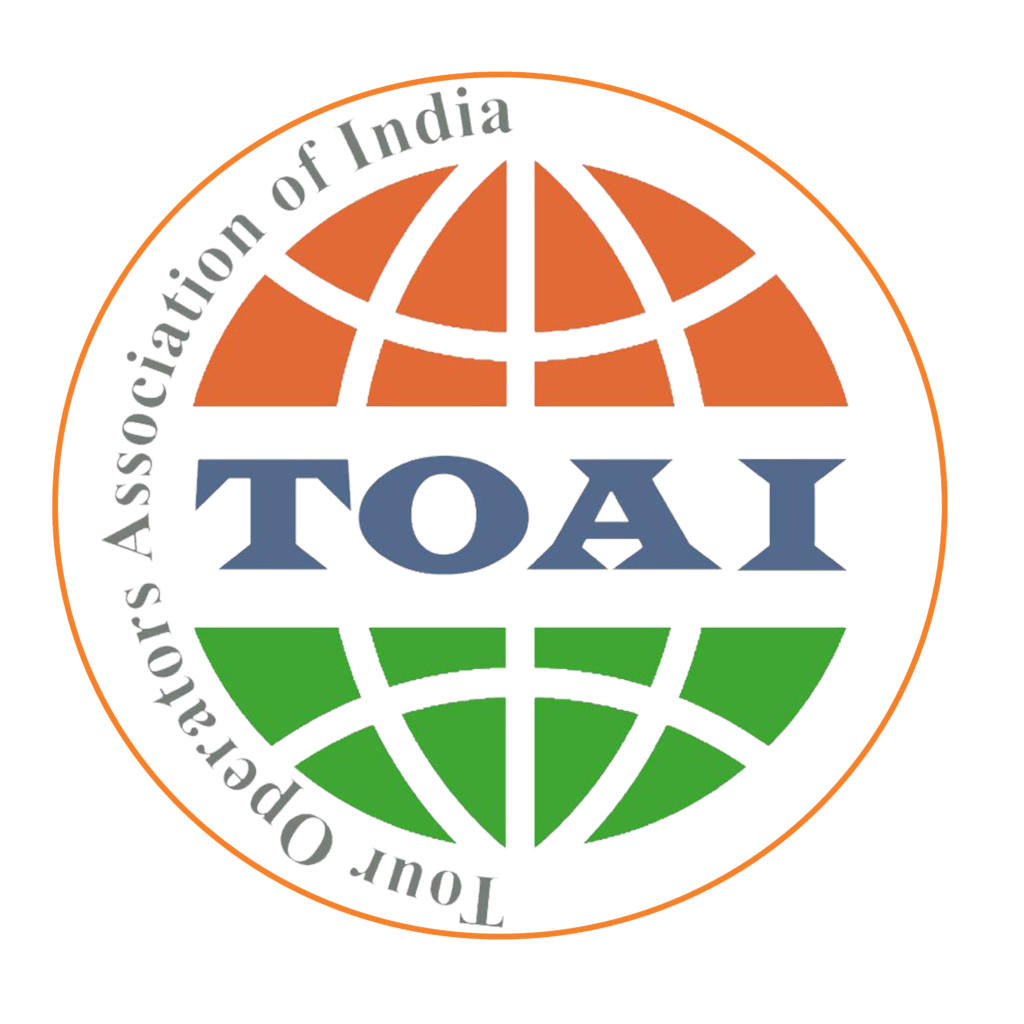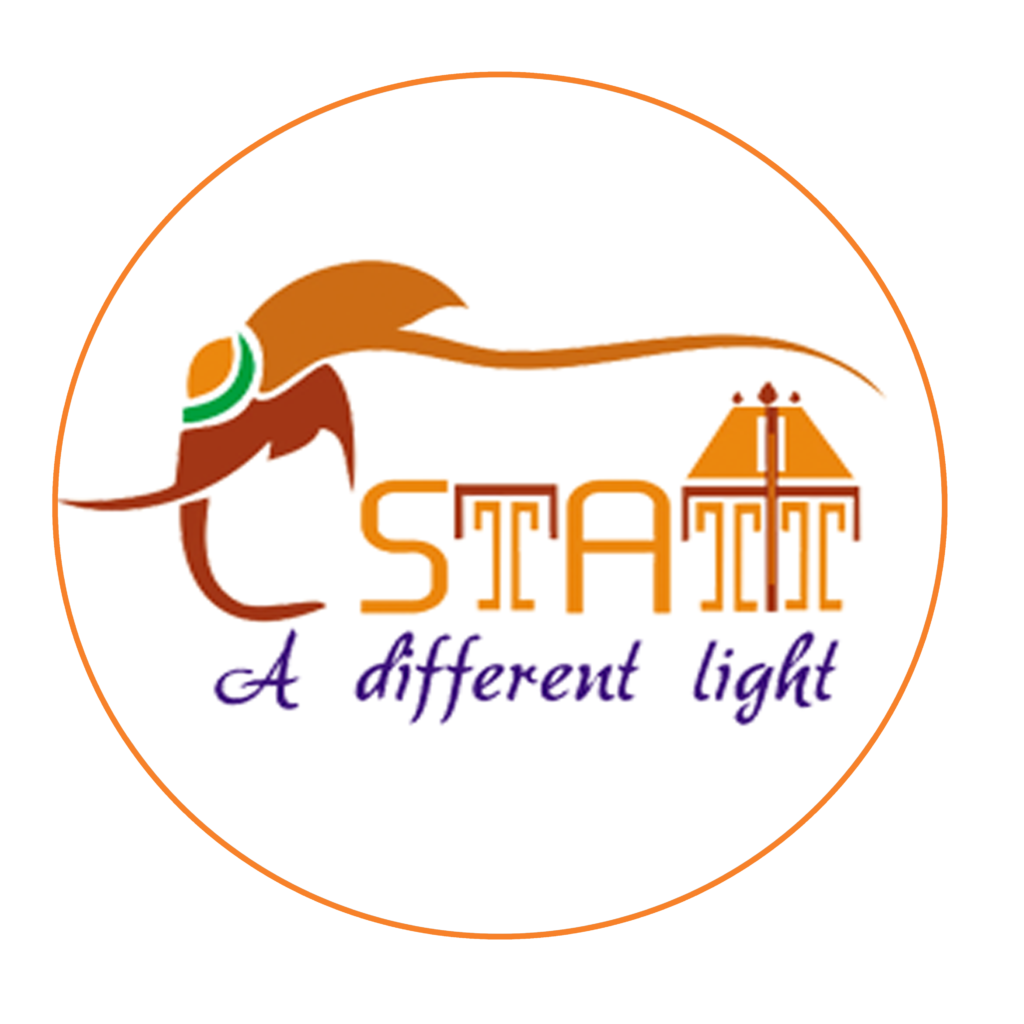
South India's No. 1 Travel Agency ✨
💱 Currency
Bhutanese Ngultrum (BTN) (Indian Rupee is also widely accepted)
🗣️ Languages
Dzongkha (English and Hindi are commonly understood)
🌤️ Climate
-2°C – 30°C (varies with altitude and season)
📅 Best Season
March – May (Spring) September – November (Autumn)
🛡 Must-Know Travel Tips for Visiting Bhutan
- 🏧 ATMs are available in major towns like Thimphu and Paro, but may not always work with international cards—carry enough cash.
- 💳 Credit cards are accepted at some hotels and high-end shops, but cash is preferred, especially in smaller towns..
- 🏦 Banks operate on weekdays (usually 9 AM – 3 PM); ATMs are limited, so plan your withdrawals in advance.s.
- 🍷 The legal drinking age in Bhutan is 18. Local alcoholic drinks like ara are popular in rural areas.
- 🤝 Bhutanese people are respectful and soft-spoken; dress modestly and follow cultural etiquette when visiting temples or dzongs.
- 💰 Bhutan follows a fixed minimum daily package rate for tourists, which includes accommodation, meals, and a guide—budget accordingly.
What Is Bhutan Famous For? – About Bhutan Explained
Known as the “Land of the Thunder Dragon,” Bhutan tour packages are popular among travelers seeking serene landscapes, strong cultural identity, and a nation deeply committed to preserving its ancient traditions. Tucked between India and China in the Eastern Himalayas, Bhutan is best known for its stunning natural beauty, deeply spiritual lifestyle, and commitment to happiness over economic growth. In fact, it is the only country in the world to officially measure success through Gross National Happiness (GNH) rather than Gross Domestic Product (GDP). This reflects Bhutan’s deep-rooted Buddhist philosophy that prioritizes emotional well-being, community, environmental preservation, and cultural identity.Tourists are drawn to Bhutan for its mesmerizing mountain landscapes, pristine forests, and sacred monasteries perched on cliffsides—most famously, the Paro Taktsang (Tiger’s Nest Monastery), one of the world’s most iconic spiritual sites. Bhutan is also known for its colorful festivals, or “Tshechus,” which are spiritual events featuring masked dances, music, and rituals celebrated in dzongs (fortress-monasteries). These festivals bring communities together and offer visitors a vibrant cultural immersion. Another reason Bhutan stands out is its environmental commitment. With more than 70% of its territory covered in forests, Bhutan holds the unique distinction of being the world’s only carbon-negative nation.Plastic bags are banned, tobacco use is restricted, and the tourism model limits crowds to preserve its heritage.The kingdom is deeply spiritual, and this is reflected in the quiet, respectful way of life seen in everyday Bhutanese customs. Whether it’s the national dress, the prayer wheels spinning in city corners, or the monks chanting in remote monasteries, Bhutan offers a rare glimpse into a nation living in harmony with nature and tradition.
Bhutan Tour Packages
Most Chosen Bhutan Tour Plans by Our Happy Customers
How Are India and Bhutan Connected? – Cultural & Historical Ties
India and Bhutan are connected by more than geography; their relationship is built on centuries of shared culture, spiritual heritage, and enduring friendship.These two neighboring countries have maintained close diplomatic ties since 1949 when they signed the Treaty of Friendship, which was further strengthened in 2007 with renewed cooperation in foreign affairs, defense, and economic development. India remains Bhutan’s closest and most trusted ally, providing developmental aid, infrastructure assistance, and open trade channels. In return, Bhutan has remained a peaceful neighbor, allowing strong cultural exchange and mutual respect.From a cultural and spiritual perspective, the links run even deeper. Buddhism, which is the state religion of Bhutan, came from India via Tibetan Buddhism and was shaped by Indian saints like Guru Padmasambhava, who is revered in both nations. Guru Rinpoche, as he is known in Bhutan, is believed to have introduced Tantric Buddhism to Bhutan in the 8th century, and many monasteries and sacred sites in Bhutan are dedicated to him. The shared Buddhist roots are reflected in the architecture, temple rituals, and festivals of both countries.Indian tourists visiting Bhutan often find a strong sense of familiarity in food, values, hospitality, and even language. Hindi is understood in many parts of Bhutan, and Indian currency is widely accepted. The border towns, especially Phuentsholing, serve as entry points for Indian travelers, and overland travel from West Bengal is common.The two nations also enjoy vibrant educational ties and frequent people-to-people exchanges that strengthen their mutual understanding and goodwill. Indian citizens enjoy visa-free access to Bhutan (with only a nominal fee for a permit), which makes travel easy and culturally immersive. The long-standing friendship between India and Bhutan is rooted not only in politics but also in shared traditions, religious harmony, and neighborly goodwill that continue to thrive today.
Interesting Things to Know About Bhutan Before You Go
Before heading to Bhutan, it’s helpful to know a few fascinating facts and practical tips that can make your journey smoother and more meaningful. First, Bhutan has a very controlled tourism policy—it follows a “high value, low impact” model, which means the number of tourists is managed carefully to avoid overcrowding and environmental harm. While citizens of most countries must pay a Sustainable Development Fee (SDF), Indian travelers pay a much lower fee compared to others, making Bhutan one of the most accessible Himalayan destinations for Indians.One of the most interesting things about Bhutan is its emphasis on Gross National Happiness (GNH) as a national philosophy. Every decision made by the government—from development projects to tourism policies—is based on how it will affect the happiness and well-being of its people. This approach gives the country a peaceful, contemplative atmosphere that is instantly noticeable to visitors.Bhutanese culture is remarkably well-preserved. Men and women wear traditional attire daily—gho for men and kira for women. Respect for the monarchy is deeply ingrained in the people, and images of the King and Queen are displayed with pride. The country has zero traffic lights, and policemen in white gloves manage intersections with calm precision—a symbol of Bhutan’s peaceful lifestyle. Smoking is prohibited in most public spaces, and selling tobacco is banned, so travelers should be mindful of local rules.
The Bhutanese are warm, welcoming, and deeply spiritual. While many people speak English, especially in urban areas, learning a few Dzongkha greetings (like “Kuzu zangpo la” for hello) is appreciated. Try local cuisine like ema datshi (chili and cheese stew), red rice, and momo dumplings. Respecting temple customs—such as removing shoes, dressing modestly, and not photographing certain religious icons—is important.The weather varies widely due to elevation. From lush valleys to snow-covered passes, packing layers is essential. Internet and mobile coverage are decent in towns like Thimphu and Paro, but limited in rural areas. Smaller shops often don’t accept credit cards, so having some cash on hand is a smart idea.Visiting Bhutan isn’t just another vacation—it’s a transformative experience rooted in mindfulness, tradition, and balance. Preparing yourself with this knowledge will help you embrace the country’s unique rhythm and leave with far more than just photographs.
What to Know Before Booking a Bhutan Tour Package
Booking a trip to Bhutan is unlike planning travel to most other countries. Bhutan follows a distinctive tourism policy designed to preserve its culture and environment through a “High Value, Low Impact” approach. This means that tourists, except those from India, Bangladesh, and the Maldives, must pay a daily Sustainable Development Fee (SDF), which includes accommodation, transport, a guide, and meals. Indian citizens, however, enjoy visa-free entry but are required to obtain an entry permit and pay a much smaller SDF per day, which helps maintain the kingdom’s eco-conscious model. Before booking your trip, it’s important to understand what the standard itinerary includes—typically, visits to Thimphu, Paro, and Punakha over a span of 5 to 7 days, with opportunities to explore ancient monasteries, experience traditional festivals, and hike in the Himalayas.Travelers should also consider the time of year. The best months to visit are from March to May and from September to November, when the weather is clear and the landscapes are vibrant. Spring brings blooming rhododendrons, while autumn is known for colorful festivals like Thimphu Tshechu. Winter offers snow in higher elevations and fewer tourists, while the monsoon season from June to August can lead to washed-out roads and limited views. Accommodations in Bhutan range from basic guesthouses to luxurious eco-resorts, so choosing the right comfort level is key. It’s also essential to book through a registered travel agency recognized by Bhutan’s Tourism Council, as they handle permits, logistics, and guide services.When packing, bring warm clothes regardless of season, as the weather can change quickly with altitude. Modest attire is expected, especially when visiting temples or attending religious festivals. Carry cash in local currency, as card usage is limited in smaller towns. Photography is restricted inside monasteries and dzongs, and it’s courteous to ask before taking photos of local people. The pace of travel in Bhutan is slow and meditative, and embracing this rhythm will make your journey more fulfilling. Whether you’re drawn by the spiritual energy of cliffside monasteries or the scenic beauty of forested valleys, understanding the travel norms and cultural expectations of Bhutan ensures a smooth, respectful, and memorable visit.
Which Are the Best Budget Bhutan Tour Packages?
For travelers seeking a deeply enriching experience without breaking the bank, Bhutan offers several ways to enjoy its mystical charm on a budget. While international tourists often have to pay higher fixed costs, Indian travelers benefit from more affordable options and easier access. Budget-friendly trips typically last between 4 to 7 days and cover popular regions like Thimphu, Paro, and Punakha, each offering a unique blend of history, spirituality, and natural beauty. Inexpensive accommodations such as homestays and simple guesthouses provide authentic hospitality while keeping costs low, and meals are often included or available at very reasonable prices. Local transport between cities is usually arranged in shared vehicles, making travel efficient and cost-effective.Traveling during the off-season—particularly between June and August or during the winter months—can also reduce overall expenses, though it’s important to check weather conditions.Opting for overland travel via Phuentsholing, the border town next to West Bengal, is a budget-friendly alternative to flying directly into Paro. A well-structured and affordable Bhutan tour plan can ensure visits to iconic sites like the Tiger’s Nest Monastery, Tashichho Dzong, Dochula Pass, and the Buddha Dordenma statue, all without overspending. Meals in Bhutan are hearty and inexpensive, with many local eateries offering red rice, ema datshi (chili-cheese stew), and fresh vegetables at modest rates.
Shopping for handicrafts and souvenirs is also wallet-friendly at local markets, especially in Thimphu’s weekend bazaar or Paro’s craft stalls. To save even more, it helps to carry Indian Rupees (accepted widely), avoid luxury upgrades, and opt for walking or public transport wherever possible. Despite its perception as a premium destination, Bhutan is surprisingly accessible for those willing to plan carefully and immerse themselves in its slow-paced, nature-rich lifestyle. Budget travel here doesn’t mean sacrificing depth—it means enjoying simplicity, authenticity, and meaningful exploration in one of the world’s most peaceful countries.
Quick Facts About Bhutan – Geography, Wildlife & People
Bhutan is a compact Himalayan nation renowned for its diverse landscapes, rich biodiversity, and deeply rooted cultural heritage. Nestled between India and China, it covers approximately 38,000 square kilometers and ranges in elevation from subtropical plains in the south to snow-covered peaks in the north. This dramatic variation creates multiple climate zones and landscapes—from dense forests and lush valleys to alpine meadows and icy summits. The country is home to part of the Eastern Himalayas, and about 70% of its territory is under forest cover, which plays a major role in Bhutan being the world’s only carbon-negative nation. Its rivers, including the Wang Chhu and Mo Chhu, wind through steep valleys, adding to the picturesque charm of its dzongs (fortress-monasteries) and villages.Wildlife in Bhutan is as diverse as its terrain. The country is a sanctuary for rare species such as the snow leopard, red panda, takin (Bhutan’s national animal), Himalayan black bear, and blue sheep. Birdwatchers are drawn to Bhutan for its wide variety of birds including black-necked cranes, hornbills, and Himalayan monals. Environmental conservation is a core part of Bhutan’s national identity, with protected areas like Jigme Dorji and Royal Manas National Parks serving as vital sanctuaries for the country’s rich wildlife and plant life.The government maintains strict environmental policies, banning plastic bags and regulating tourist numbers to minimize ecological impact.
Bhutanese people are known for their genuine warmth, hospitality, and strong devotion to preserving their cultural traditions. The majority follow Vajrayana Buddhism, which influences daily life, art, festivals, and public policy. Bhutanese society is closely knit, and traditional values like harmony, modesty, and community play a central role. Men and women still wear national dress—gho and kira—and it’s common to see prayer flags fluttering across mountain passes, spinning prayer wheels at roadside shrines, and monks chanting in ancient temples. While Dzongkha is the national language, English is widely used in schools and for official communication, making it easier for tourists to interact. The monarchy is highly respected, and the country takes pride in its peaceful governance, minimal crime, and cultural unity. Visitors to Bhutan are often struck by its serene atmosphere, where time feels slower, and nature and spirituality exist in perfect balance—a rare and unforgettable contrast to the rush of modern life.
Bhutan Tour Packages
| High season | March to May (Spring), September to November (Autumn) |
|---|---|
| Iconic Attractions | Paro Taktsang (Tiger’s Nest Monastery), Punakha Dzong, Dochula Pass, Buddha Dordenma, Thimphu Clock Tower |
| Popular Activities | Panoramic Train Ride, Photography, Glacier Viewing, Alpine Hiking |
| Visa | Hiking & Trekking, Cultural Festivals (Tsechus), Monastery Visits, River Rafting, Bird Watching |
| National Animal | Visa required for most nationalities (except for Indians); Indian travelers need a permit — apply in advance or on arrival |
| National Flower | Blue Poppy |
| Famous Food | Ema Datshi (chili cheese stew), Red Rice, Momos, Phaksha Paa (pork with radish), Butter Tea |
Top 10 Reasons Why Tourists Love Visiting Bhutan
Bhutan has become a dream destination for travelers seeking more than just sightseeing—a place that offers peace, purpose, and profound cultural experiences. One of the top reasons tourists fall in love with Bhutan is its unspoiled natural beauty. Tucked away in the Eastern Himalayas, Bhutan showcases breathtaking mountain scenery, dense green forests, and serene terraced valleys that feel untouched by the modern world.Whether it’s snow-capped peaks or blooming rhododendron trails, nature lovers find themselves immersed in serenity.Second, Bhutan is the world’s only carbon-negative country, with over 70% of its land covered in forests. This strong commitment to conservation makes the air fresher, the rivers cleaner, and the experience far more tranquil than in crowded destinations. Third, the country’s unique philosophy of Gross National Happiness prioritizes the well-being of its citizens over economic gain. Tourists often sense this in the calm, respectful way of life and in the hospitality shown by locals.Fourth, Bhutan is deeply spiritual and culturally authentic. The influence of Vajrayana Buddhism is visible in everything from fluttering prayer flags to majestic hilltop monasteries. Paro Taktsang, or the Tiger’s Nest Monastery, perched on a cliff 10,000 feet above sea level, is one of the most memorable spiritual treks in Asia. Fifth, the architecture of Bhutan is unlike anywhere else, with whitewashed dzongs (fortress-monasteries), intricately painted wooden windows, and traditional homes designed without nails—showcasing both craftsmanship and tradition.
Sixth, vibrant festivals known as Tshechus are a major draw for travelers. These colorful events, held throughout the year in various dzongs, feature masked dances, rituals, and spiritual blessings. Few destinations offer such a profound and authentic cultural experience.Seventh, Bhutan’s people are exceptionally welcoming and grounded, living in tune with nature and tradition. Visitors are often greeted with genuine warmth and curiosity, especially in rural areas.Eighth, the food in Bhutan is simple but flavorful, with red rice, chili-based stews like ema datshi, and fresh organic vegetables forming the base of most meals. Travelers appreciate the blend of spice and simplicity, especially in homestays and local eateries.Ninth, Bhutan stands out for its safety and tranquility—crime rates are low, major cities operate without traffic lights, and a genuine atmosphere of trust and serenity prevails. It’s ideal for solo travelers, families, and those seeking mindful experiences.And finally, tenth, Bhutan offers a refreshingly slow pace of travel. There are no flashy billboards or noisy crowds—just nature, culture, and a deep sense of balance. This makes Bhutan feel like a spiritual retreat as much as a vacation, and it’s the reason why so many visitors leave with a renewed sense of self and a longing to return. Whether for the landscapes, the values, or the people, Bhutan captures hearts with its purity and depth—something that modern tourism rarely delivers.
When Is the Best Time to Visit Bhutan for Travel?
The best time to visit Bhutan depends largely on what kind of experience you’re seeking whether it’s trekking through green valleys, attending colorful festivals, spotting wildlife, or simply enjoying cool mountain air. March to May and September to November are generally considered the best months to visit, offering pleasant weather and clear views.Spring (March–May) brings mild temperatures, clear skies, and vibrant blooms, especially rhododendrons in full color across mountain passes. It’s a favorite time for trekking and nature photography. Autumn (September–November) is equally popular for its crisp weather, panoramic views of the Himalayas, and major cultural events like the Thimphu Tshechu and Paro Tshechu festivals, which showcase masked dances, music, and traditional rituals.
If you’re specifically interested in nature and wildlife safaris—particularly bird watching and exploring the country’s rich biodiversity—the winter months of December to February offer unique advantages. During this time, rare migratory birds such as the black-necked cranes arrive in the Phobjikha Valley, drawing bird enthusiasts from around the world. This season is also quieter, with fewer tourists and snow-dusted landscapes, especially in higher altitudes. However, some mountain passes may be closed due to snow, so lower-altitude areas like Punakha and Phobjikha are better suited for winter travel.The monsoon season, from June to August, is the least recommended for general tourism due to heavy rains, landslides, and poor visibility. However, this is when Bhutan is at its greenest, and it can appeal to travelers looking for solitude, lower prices, and mist-covered hills. No matter the season, Bhutan offers beauty in all forms—from wildlife encounters and peaceful nature walks to temple visits and community experiences—so choosing your timing depends on what kind of magic you’re looking to discover.
What Are the Best Things to Do in Bhutan?
Bhutan offers a truly unique travel experience filled with spiritual discovery, scenic adventure, and cultural immersion. Hiking to Paro Taktsang—famously perched on a cliff and known as the Tiger’s Nest Monastery—is among Bhutan’s most iconic experiences.Perched dramatically on a cliff, it’s the country’s most iconic landmark and a spiritual highlight for many. The journey is both challenging and rewarding, offering stunning views and a deep sense of accomplishment. Equally impressive are visits to majestic dzongs like Punakha Dzong and Tashichho Dzong in Thimphu, which serve as both administrative centers and religious hubs.
Another must-do experience is attending a traditional Bhutanese festival or “Tshechu.” These vibrant celebrations, filled with mask dances and music, offer insight into Bhutan’s spiritual traditions and are among the most colorful experiences a visitor can have. Nature lovers can enjoy trekking in the Himalayas, with routes like the Druk Path Trek and Jomolhari Trek offering alpine lakes, yak herder camps, and panoramic mountain views. A thoughtfully crafted Bhutan tour plan ensures that these experiences are timed perfectly, combining iconic landmarks with lesser-known gems and allowing space for personal discovery. Wildlife enthusiasts can explore places like Jigme Dorji National Park or the Phobjikha Valley, home to the endangered black-necked cranes.Bhutan offers a peaceful setting that naturally encourages mindfulness, spiritual growth, and quiet self-reflection.Visiting Buddhist monasteries, spinning prayer wheels, and meditating in peaceful valleys allows you to slow down and reconnect with yourself. You can take part in local craft workshops, such as traditional paper making or weaving, or explore markets for Bhutanese textiles and handicrafts. For a lighter experience, try hot stone baths in a farmhouse—an age-old Bhutanese way to relax and soothe sore muscles after a long hike. Simply walking through Bhutan’s quiet towns, interacting with locals, and taking in the pristine scenery is an experience in itself. Every activity in Bhutan feels purposeful and soul-enriching, making it one of the most memorable travel destinations in the world.
What Food Is Bhutan Known For? – A Guide to Bhutan Cuisine
Bhutanese cuisine is flavorful, spicy, and deeply tied to the country’s high-altitude agriculture and Buddhist heritage. Ema Datshi, a spicy blend of chilies and local cheese, stands out as Bhutan’s signature dish and a beloved staple across the country. It’s more than just a dish; it’s a cultural symbol that appears in almost every Bhutanese meal. While chilies are used as a vegetable rather than a spice in Bhutan, other varieties of datshi include Kewa Datshi (with potatoes) and Shamu Datshi (with mushrooms), catering to different tastes and spice levels.Red rice, with its slightly nutty flavor and chewy texture, is another essential part of Bhutanese meals and is cultivated in the country’s fertile valleys. It’s served with most meals alongside vegetables, stews, and occasionally meat. Though Bhutan is a predominantly Buddhist country, meat—especially pork, chicken, and beef—is consumed widely. Hearty dishes such as phaksha paa—pork cooked with radish and chilies—and shakam paa—spiced dried beef—offer bold flavors and satisfying portions.Vegetarians will also find plenty of options, as many meals include fresh mountain vegetables, stir-fried greens, and hearty stews.Momos—Tibetan-style dumplings—are popular across Bhutan and come filled with meat, cheese, or vegetables. They’re often steamed but may also be fried and served with spicy tomato-based chutneys. A typical Bhutanese meal is rich in dairy, with butter tea and yak cheese being common, especially in colder regions. For dessert or snacking, Bhutanese locals enjoy puffed rice snacks, fried dough, and homemade sweets made during festivals.
Dining in Bhutan is also a cultural experience. Meals are usually taken in calm, family-oriented settings, and traditional etiquette is followed. Sharing food, eating with your hands in rural homes, or joining a cooking class at a farmhouse adds a personal touch to your food journey. While the flavors might be intense for some, Bhutanese cuisine offers a blend of spice, warmth, and rustic simplicity that reflects the country’s deep connection to nature and tradition.
Bhutan Tour Packages
| Trongsa | Trongsa Dzong (Largest Fortress in Bhutan), Tower of Trongsa Museum, Central Valley Views |
|---|---|
| Haa Valley | Traditional Villages, Pristine Landscapes, Lhakhang Karpo & Nagpo (White & Black Temples) |
| Bumthang | Spiritual Heartland, Jakar Dzong, Kurjey Lhakhang, Cheese & Honey Tasting, Hiking Trails |
| Phobjikha Valley | Scenic Glacial Valley, Black-Necked Crane Center, Nature Trails, Gangtey Monastery |
| Punakha | Punakha Dzong (Palace of Great Happiness), Suspension Bridge, River Rafting, Chimi Lhakhang (Fertility Temple) |
| Paro | Paro Taktsang (Tiger’s Nest Monastery), Rinpung Dzong, National Museum, Paro Valley views |
| Thimphu | Buddha Dordenma, Memorial Chorten, Weekend Market, Tashichho Dzong, Folk Heritage Museum |
What Should Indian Travellers Know Before Visiting Bhutan?
Indian travelers enjoy a uniquely privileged status when visiting Bhutan, making it one of the most accessible and welcoming international destinations for citizens of India. Unlike other foreign nationals, Indians do not require a visa to enter Bhutan. Since 2020, Indian travelers must pay a modest Sustainable Development Fee (SDF) per day and obtain a travel permit, available online or at border entry points such as Phuentsholing. It’s recommended to carry a valid passport or voter ID card, as one of these is required for entry. Indian currency is widely accepted throughout the country, especially denominations up to ₹500, which makes transactions easy without the need for frequent currency exchange.
It’s helpful to know that Bhutan places a high value on preserving its culture, nature, and spiritual integrity. Travelers are expected to respect local customs—such as removing shoes before entering temples, dressing modestly (especially at religious sites), and refraining from public displays of affection. Bhutanese people are known for their politeness and humility, and returning the same level of courtesy is always appreciated. While English is widely spoken, especially in urban areas and tourist services, learning a few Dzongkha greetings like “Kuzu zangpo la” (hello) can go a long way in building rapport.Indian food is available in many restaurants and hotels, particularly in Thimphu and Paro, but travelers are encouraged to try Bhutanese cuisine for an authentic experience. Transportation within Bhutan is mostly via road, and the drives between cities like Paro, Thimphu, and Punakha can be long but incredibly scenic.Internet and mobile networks are reliable in urban areas, but coverage can be limited or spotty in remote and mountainous regions. Pack layers of clothing as temperatures can vary, and be ready for a slower pace of life—Bhutan is not about rushing from sight to sight but about soaking in calmness, culture, and clean mountain air. Preparing with this understanding ensures a smooth, respectful, and fulfilling visit.
Where to Shop in Bhutan – Best Markets & Souvenirs
Shopping in Bhutan is not just about picking up souvenirs; it’s about connecting with the country’s heritage through its crafts, textiles, and handmade artistry. One of the best places to begin is Thimphu, the capital, where the Weekend Market and Handicrafts Emporium offer a wide selection of traditional items like prayer flags, thangka paintings, incense, handmade paper, and jewelry. The Norzin Lam shopping street is also popular for boutique stores and souvenir shops featuring items made by local artisans. A visit to the National Institute for Zorig Chusum (School of Arts and Crafts) offers a deeper understanding of how traditional Bhutanese art is produced—and many pieces here can be purchased directly from the creators.
In Paro, the main market street near the town center is lined with shops selling handwoven scarves, Bhutanese wool garments, antique coins, wooden masks, and small Buddhist artifacts. Paro is also known for its archery sets, which make for unique collectibles. The quaint shops here have a slower, more relaxed vibe, and shopkeepers are friendly and open to polite bargaining.For those looking to buy authentic textiles, Bumthang is considered a weaving hub, where one can purchase yathra (handwoven woolen fabric) products. These often come in the form of bags, shawls, and jackets. In Punakha, the riverside markets and roadside stalls are great for buying bamboo products, baskets, and carved wooden bowls. Across all these regions, shoppers will find that most souvenirs are handmade and deeply rooted in Bhutanese tradition.When shopping in Bhutan, it’s good to remember that items may be slightly more expensive than mass-produced souvenirs elsewhere—but they’re far more meaningful. Each product tells a story of heritage and patience, whether it’s a pair of earrings shaped like a lotus or a wall hanging woven with Buddhist symbols. Carrying home these tokens of Bhutan not only supports local communities but brings a little piece of the country’s spirit with you.
How Is the Art and Culture Scene in Bhutan?
The art and culture scene in Bhutan is deeply intertwined with its spiritual identity and Buddhist traditions. Unlike places where modern art dominates galleries, Bhutan’s creative expression is rooted in centuries-old religious symbolism, folklore, and architectural aesthetics. One of the most prominent forms of traditional art is thangka painting—elaborate scrolls featuring deities, mandalas, or scenes from Buddhist teachings. These artworks are not just for display; they’re sacred tools used in rituals and meditation. You can see thangkas adorning monastery walls or being carried in ceremonial processions during festivals.Architecture itself is an art form in Bhutan. The country’s unique design is showcased in its dzongs—massive fortress-monasteries like Punakha Dzong and Tashichho Dzong—as well as in private homes, which are painted with symbolic images and built without nails. Carved woodwork, stone masonry, and multi-tiered roofs reflect an aesthetic that is both functional and spiritual. Even everyday objects such as butter lamps, rice containers, and door frames are designed with artistic care.The country also has a rich tradition of performing arts, including mask dances (chham), which are performed during religious festivals and are believed to ward off evil spirits. These dances are visually captivating and deeply spiritual, involving elaborate costumes, rhythmic chants, and ceremonial drums. Music, particularly traditional Bhutanese instruments like the lingm (flute) and dramyin (lute), accompanies both sacred and secular celebrations.Bhutan’s commitment to cultural preservation is evident in its schools of art and craft, such as the National Institute for Zorig Chusum, where young Bhutanese are trained in the 13 traditional arts and crafts known as Zorig Chusum. These include wood carving, embroidery, metalwork, and sculpture. At the same time, Bhutan’s urban centers like Thimphu are beginning to see a rise in contemporary art spaces, with local artists expressing identity and environmental concerns through modern mediums.Unlike many tourist destinations that present their culture in packaged formats, Bhutan lives its traditions daily. Whether you’re watching a blacksmith forge a ritual bell, listening to monks chant in an ancient temple, or witnessing a craftsman paint a deity’s face on canvas, Bhutan’s art and culture aren’t just preserved—they’re alive. Many of these enriching encounters are thoughtfully included in Bhutan tour packages that blend heritage with authentic local experiences.















